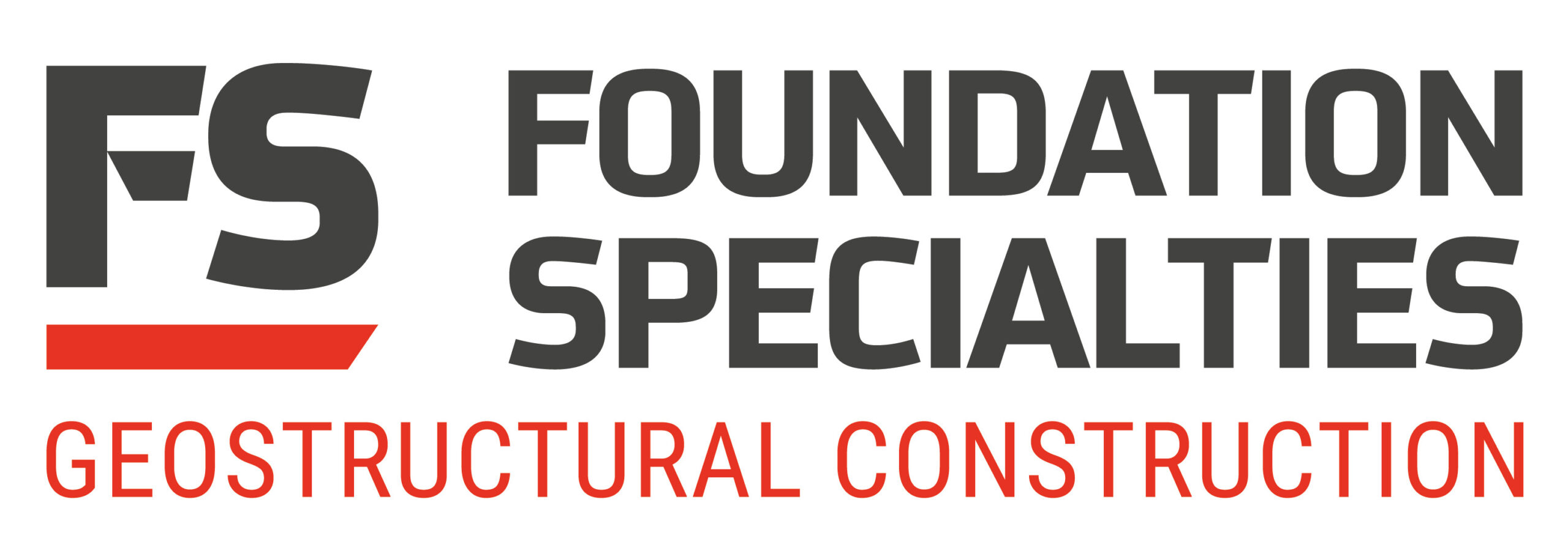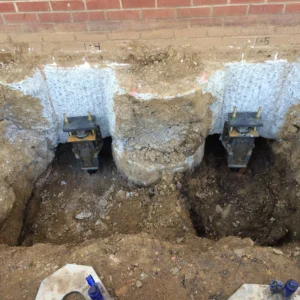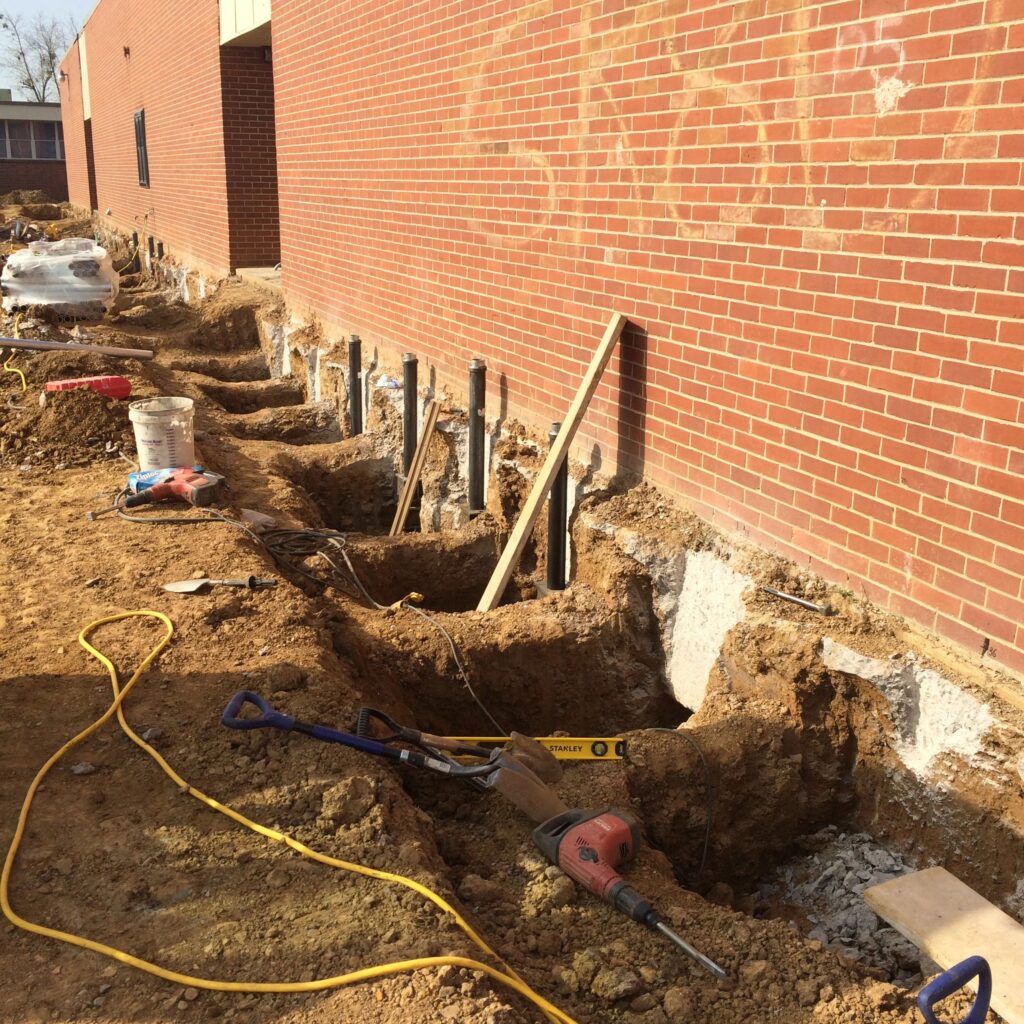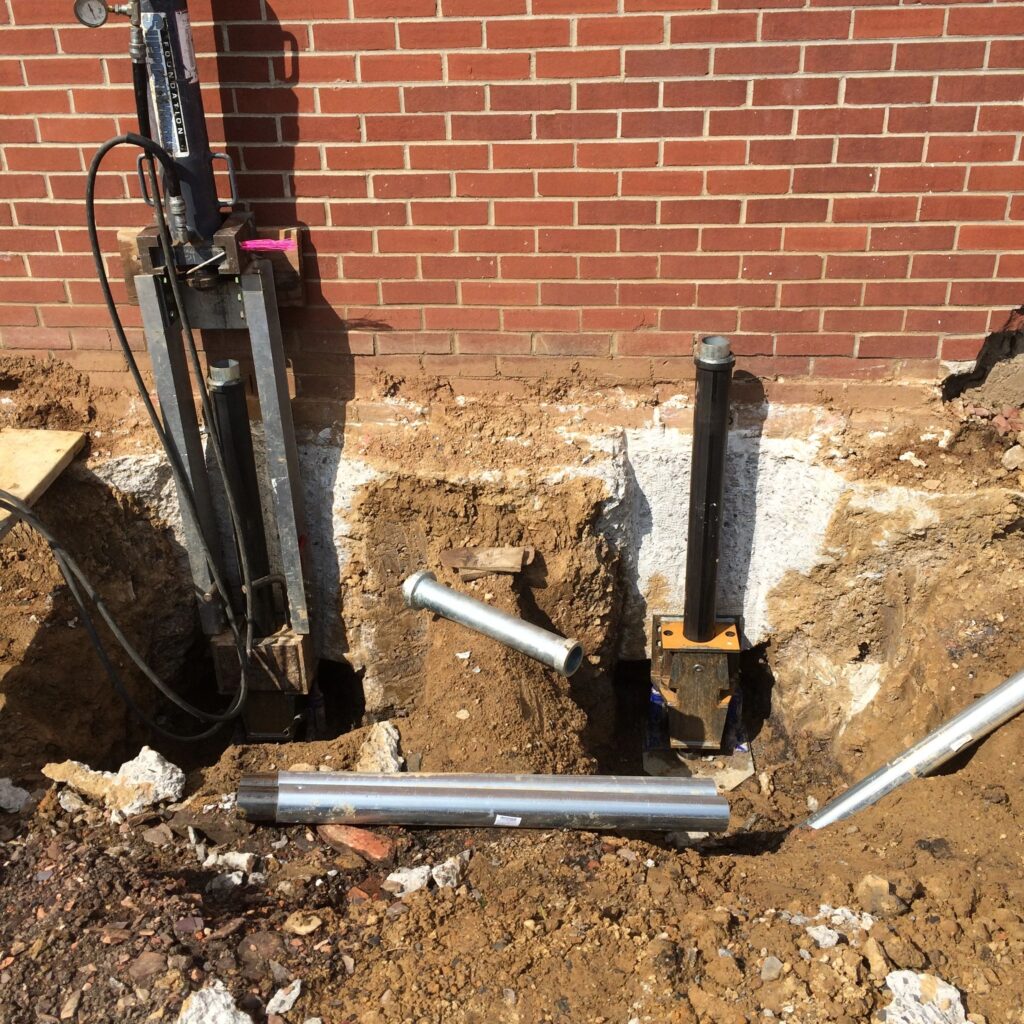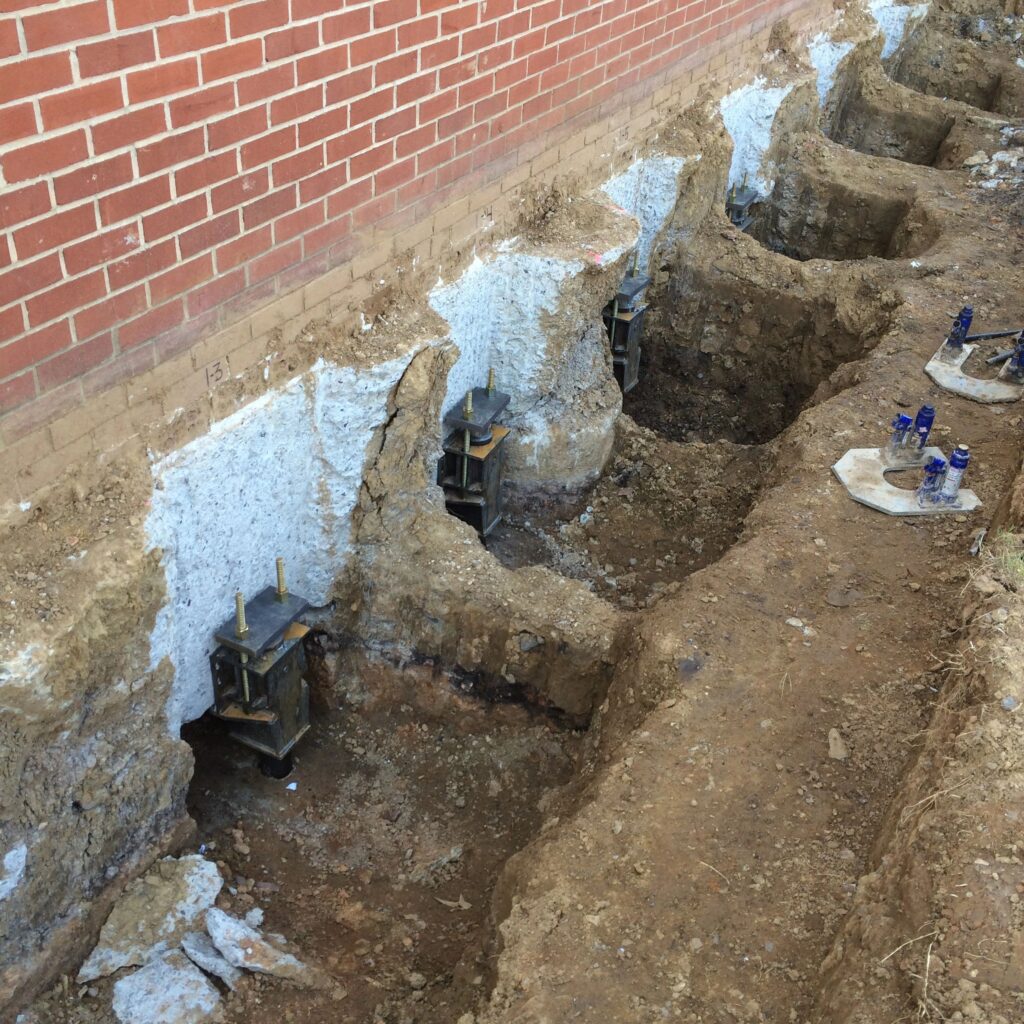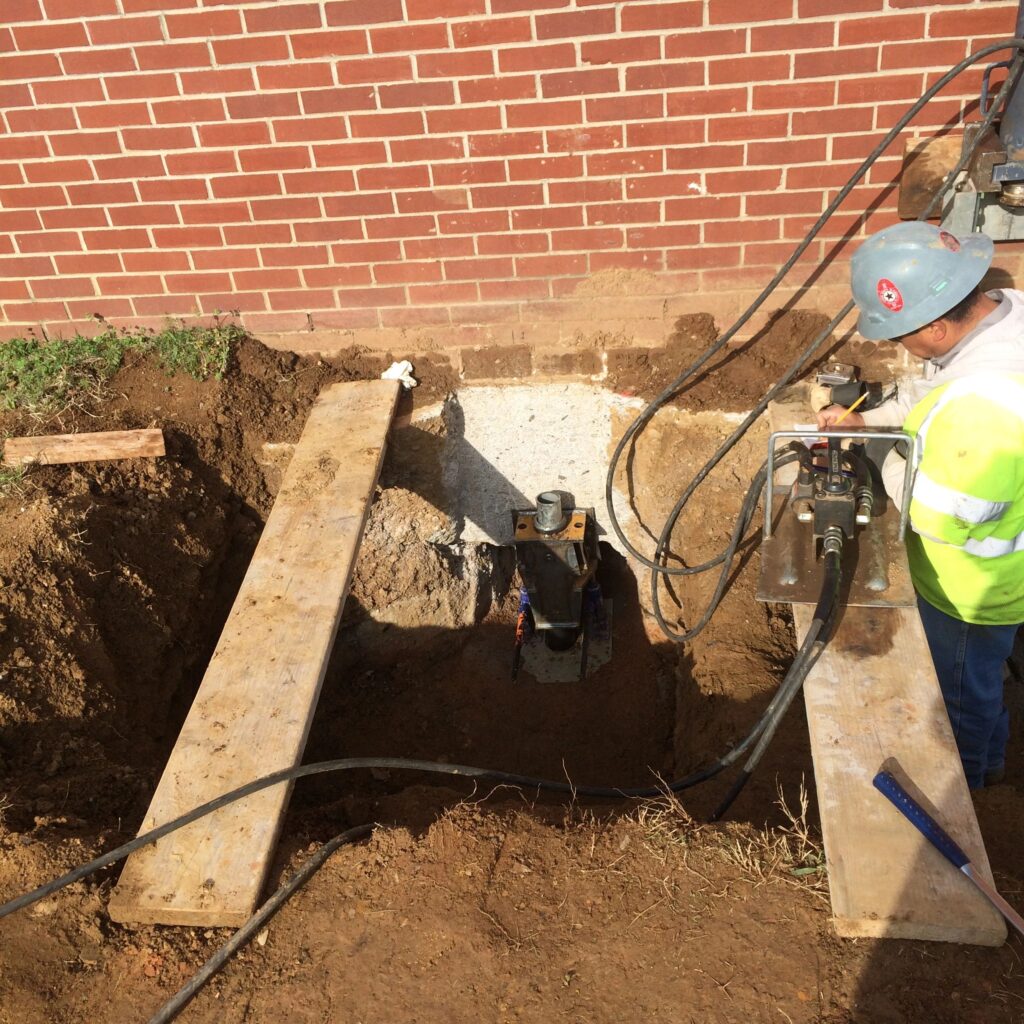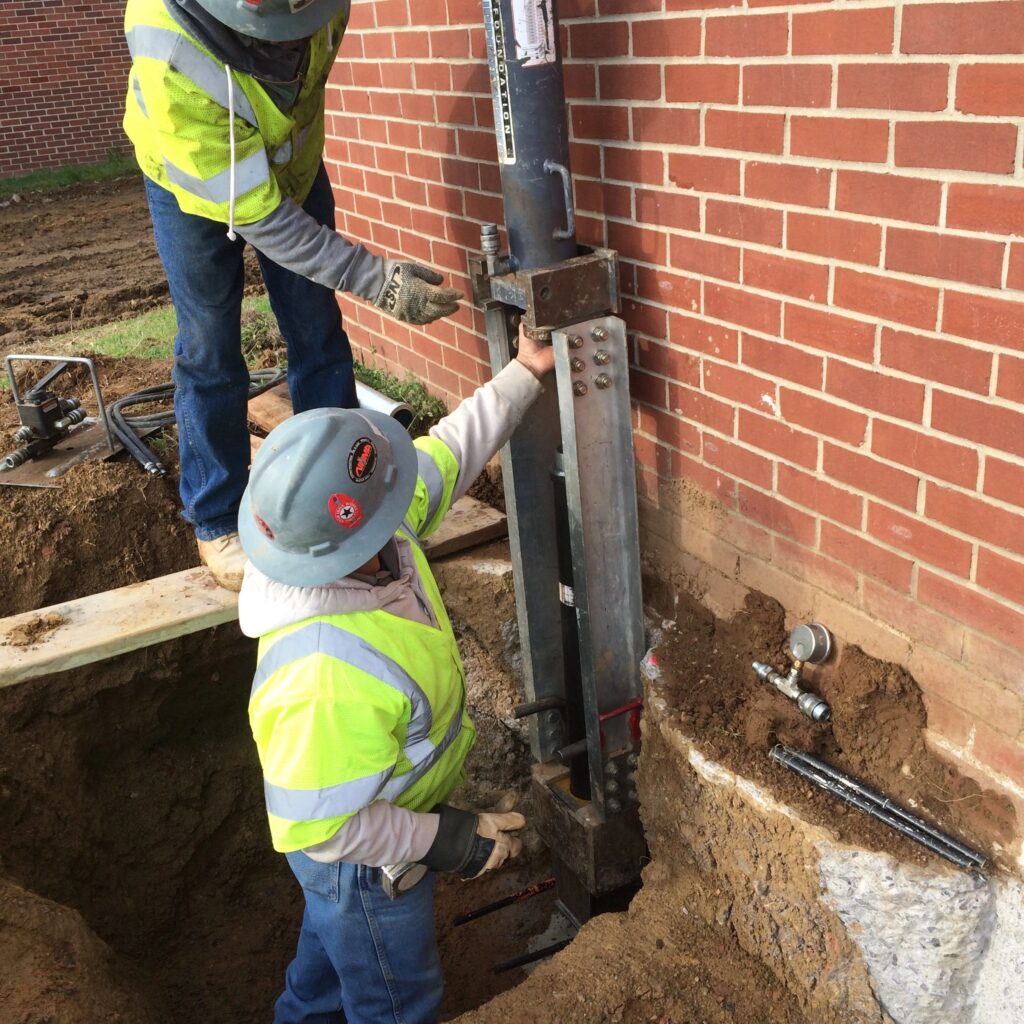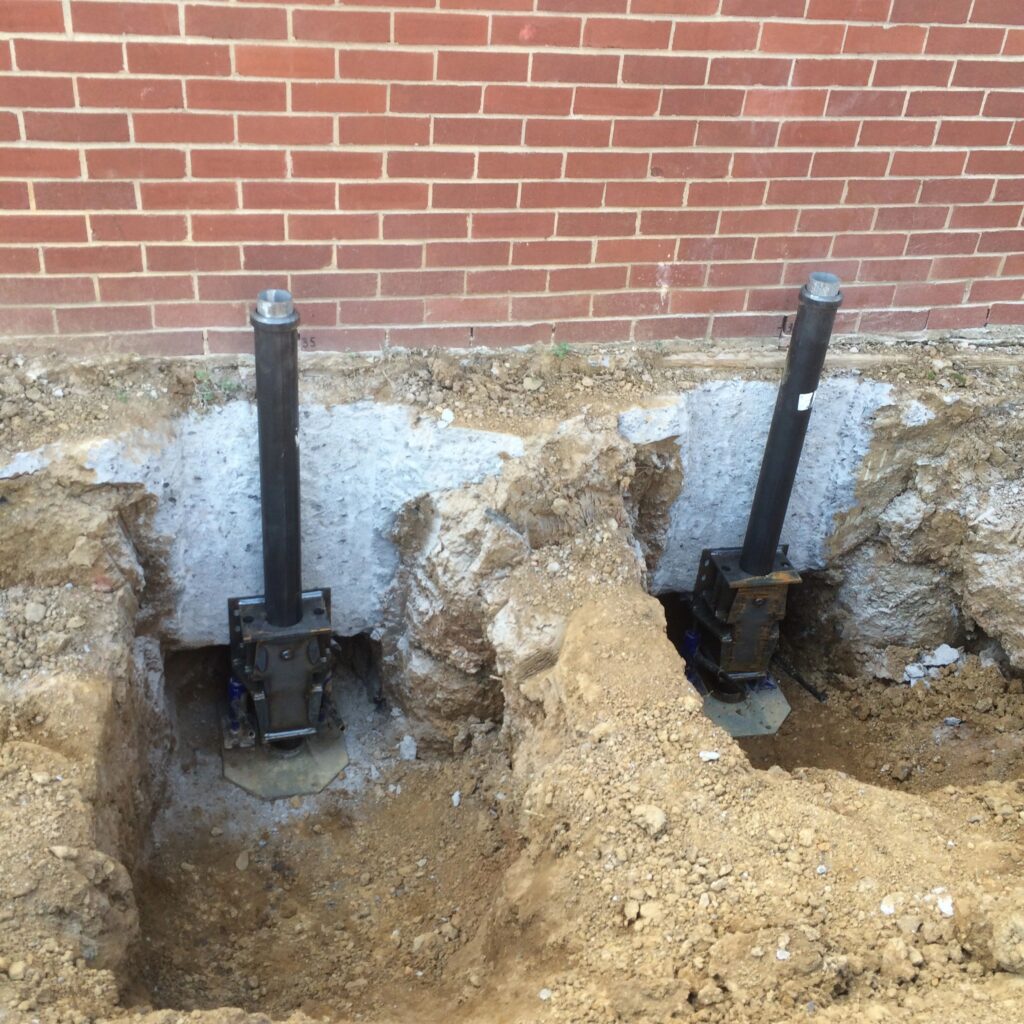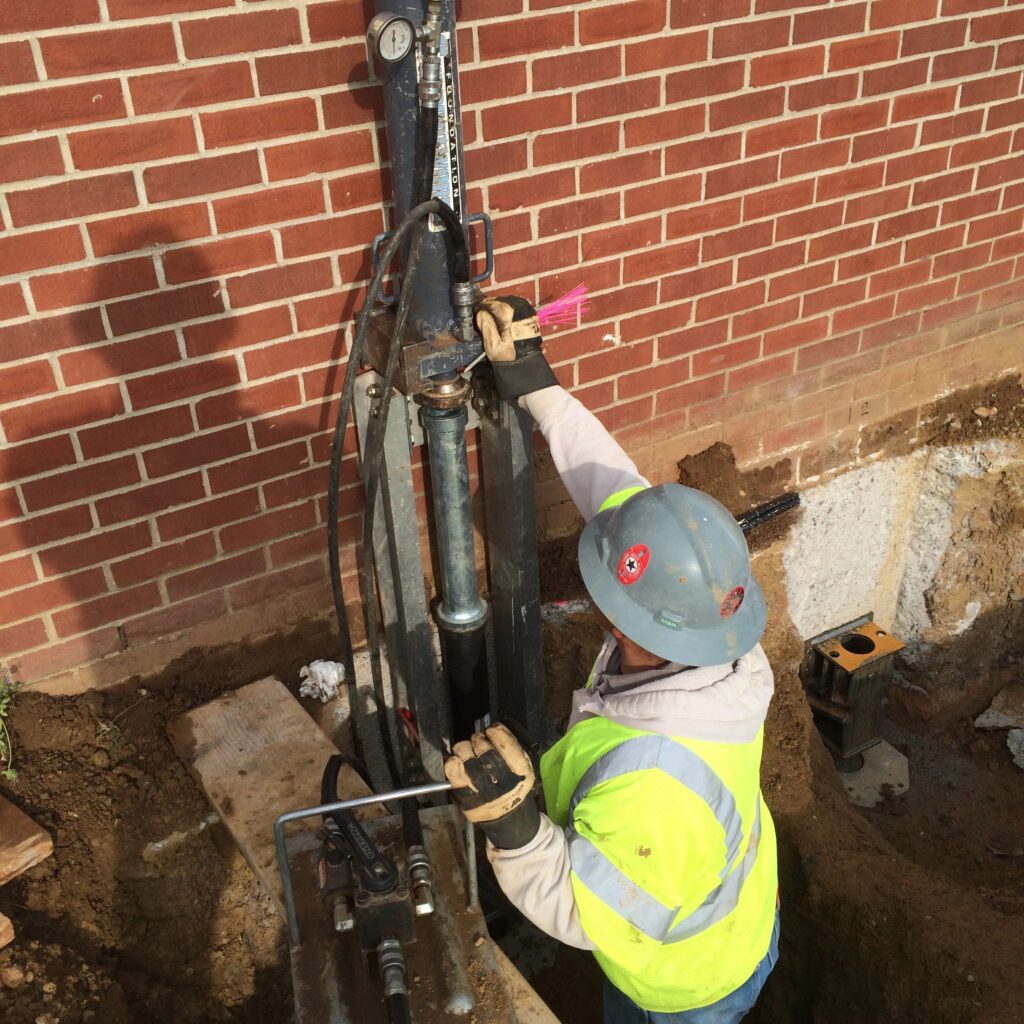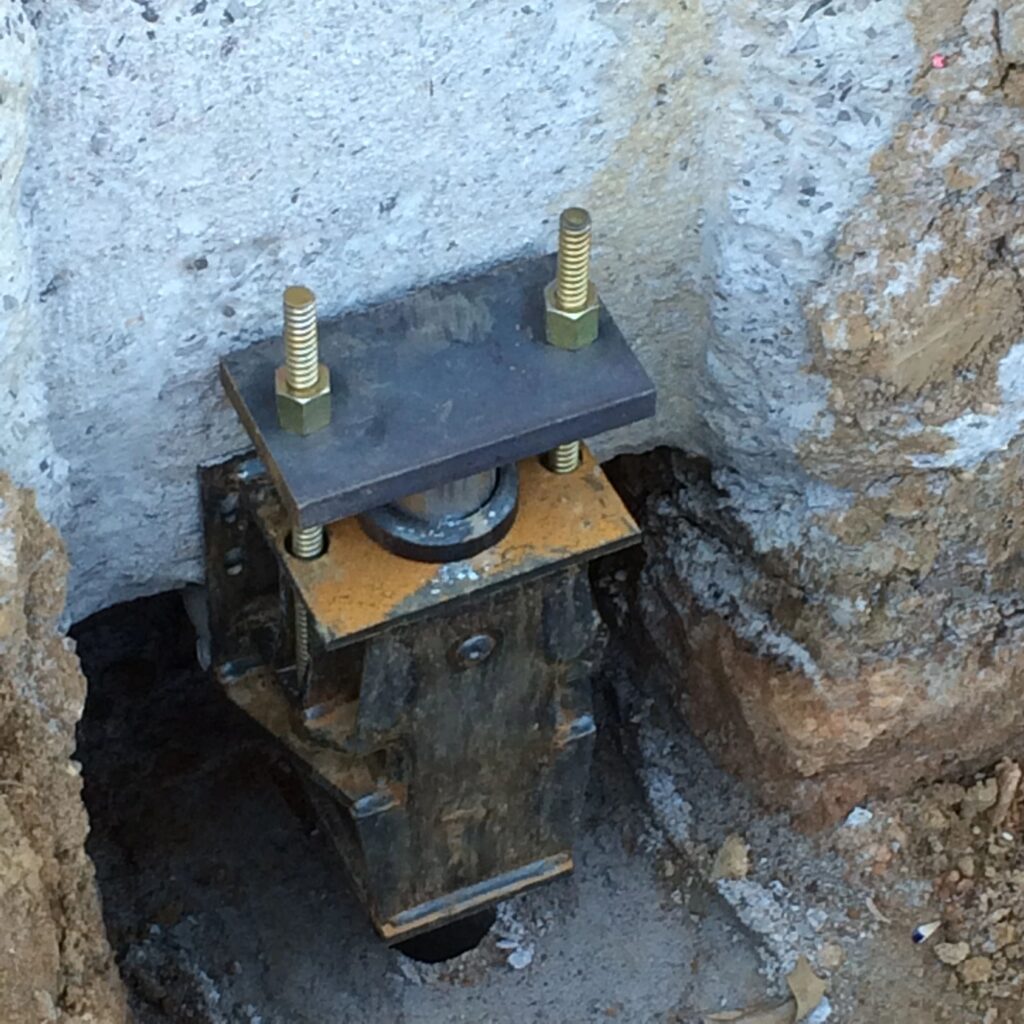FSGC uses Steel Piers from Supportworks. The Supportworks Push Pier System utilizes high-strength round steel tubes and a load transfer bracket (retrofit foundation repair bracket) to stabilize and/or lift sinking or settling foundations. The foundation bracket is secured against the existing footing and pier sections are driven hydraulically through the foundation bracket and into the soil below using the combined structural weight and any contributory soil load as resistance. Pier sections are continuously driven until a suitable load-bearing stratum is encountered. At that point, the structure either begins to lift or the target pressure/load is achieved. The weight of the structure is then transferred from the unstable soil, to the foundation brackets, through the piers, and to firm load-bearing soil or bedrock.
The Supportworks Push Pier System develops a factor of safety against pier settlement by the pier installation methods used and the sequence with which multiple piers are driven and then re-loaded. Piers are first driven individually using the maximum weight of the structure and any contributory soil load. After all of the piers are driven, the piers are re-loaded simultaneously, and the total reaction load is distributed over the multiple pier locations. Since the average load on each pier during the load transfer operation is less than the load during pier installation/driving, a factor of safety against settlement is achieved. Typical factors of safety against pier settlement range from about 1.5 to 3.0, with higher values generally achieved for structures with greater rigidity. These factors of safety conservatively ignore any additional long-term frictional component to the pier’s capacity.
For more information about Supportworks or FSGC’s Residential Repair Services click here.
Ready to Get Started?
FSGC is committed to safety, service, and excellence. We look forward to partnering with you to design and build the best solutions for your project.
